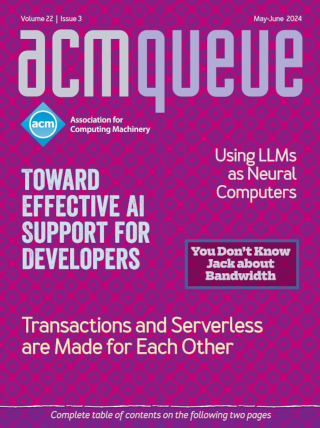
Biases in AI Systems:
A survey for practitioners
This article provides an organization of various kinds of biases that can occur in the AI pipeline starting from dataset creation and problem formulation to data analysis and evaluation. It highlights the challenges associated with the design of bias-mitigation strategies, and it outlines some best practices suggested by researchers. Finally, a set of guidelines is presented that could aid ML developers in identifying potential sources of bias, as well as avoiding the introduction of unwanted biases. The work is meant to serve as an educational resource for ML developers in handling and addressing issues related to bias in AI systems.
The Complex Path to Quantum Resistance:
Is your organization prepared?
There is a new technology on the horizon that will forever change the information security and privacy industry landscape. Quantum computing, together with quantum communication, will have many beneficial applications but will also be capable of breaking many of today's most popular cryptographic techniques that help ensure data protection?in particular, confidentiality and integrity of sensitive information. These techniques are ubiquitously embedded in today's digital fabric and implemented by many industries such as finance, health care, utilities, and the broader information communication technology (ICT) community. It is therefore imperative for ICT executives to prepare for the transition from quantum-vulnerable to quantum-resistant technologies.
Quantum-safe Trust for Vehicles:
The race is already on
In the automotive industry, cars now coming off assembly lines are sometimes referred to as "rolling data centers" in acknowledgment of all the entertainment and communications capabilities they contain. The fact that autonomous driving systems are also well along in development does nothing to allay concerns about security. Indeed, it would seem the stakes of automobile cybersecurity are about to become immeasurably higher just as some of the underpinnings of contemporary cybersecurity are rendered moot.
Schrödinger's Code:
Undefined behavior in theory and practice
Undefined behavior ranks among the most baffling and perilous aspects of popular programming languages. This installment of Drill Bits clears up widespread misconceptions and presents practical techniques to banish undefined behavior from your own code and pinpoint meaningless operations in any software—techniques that reveal alarming faults in software supporting business-critical applications at Fortune 500 companies.
In Praise of the Disassembler:
There's much to be learned from the lower-level details of hardware.
When you're starting out you want to be able to hold the entire program in your head if at all possible. Once you're conversant with your first, simple assembly language and the machine architecture you're working with, it will be completely possible to look at a page or two of your assembly and know not only what it is supposed to do but also what the machine will do for you step by step. When you look at a high-level language, you should be able to understand what you mean it to do, but often you have no idea just how your intent will be translated into action. Assembly and machine code is where the action is.
ACID: My Personal:
How could I miss such a simple thing?
I had a chance recently to chat with my old friend, Andreas Reuter, the inventor of ACID. He and his Ph.D. advisor, Theo Härder, coined the term in their famous 1983 paper, Principles of Transaction-Oriented Database Recovery. I had blinders on after almost four decades of seeing C based on my assumptions. One big lesson for me is to work hard to ALWAYS question your assumptions. Try hard to surround yourself with curious and passionate people, both young and old, who will challenge you and try to dislodge your blinders. Foster a culture that makes them safe as they do so.
A New Era for Mechanical CAD:
Time to move forward from decades-old design
The hardware industry is desperate for a modern way to do mechanical design. A new CAD program created for the modern world would lower the barrier to building hardware, decrease the time of development, and usher in a new era of building. The tools used to build with today are supported on the shoulders of giants, but a lot could be done to make them even better. At some point, mechanical CAD lost some of its roots of innovation. Let's dive into a few of the problems with the CAD programs that exist today and see how to make them better.





